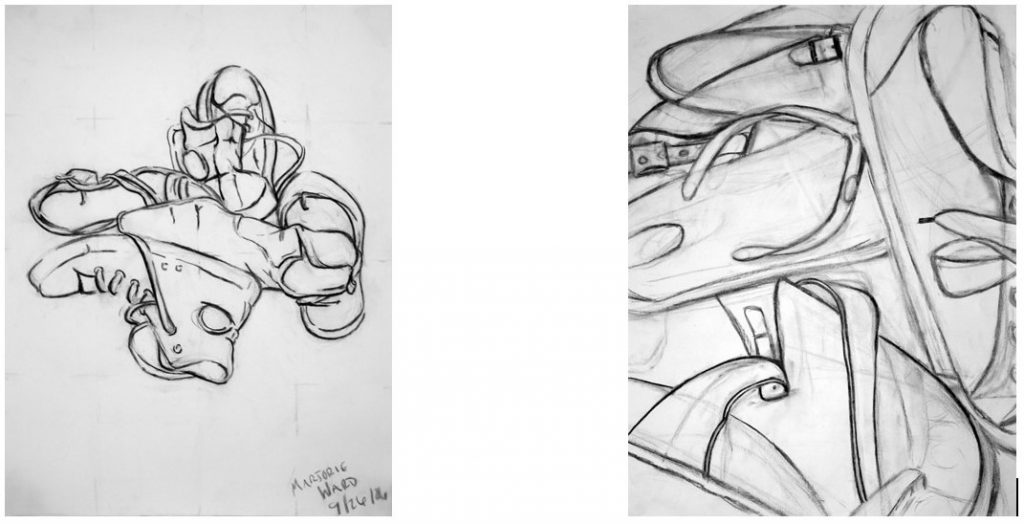Learning Objectives
- Students will be able to demonstrate an understanding of accurate drawing skills using graphite.
- Students will be able to demonstrate an understanding of value, movement, contrast, and form through drawing
Materials
- Graphite
- White paper
- Kneaded eraser
- White plastic eraser
Sketchbook
Steps:
1. Watch the video below
2.. Set up fabric on a flat surface. Fold the fabric and create an interesting composition with the fabric
3. Lightly sketch the fabric on the whole sheet of sketchbook paper
4. Add values to the drawing that represent a broad range. Refer to your value scale that you created.
5. Use an eraser to grab light values
6. Edit and correct your drawing
Project
Create a detailed, full value, proportional drawing of hanging cloth on white paper with graphite, capturing the direction of the light source and emphasizing three dimensional form.
Part 1 – In your sketchbook, create a least 5 gestural studies to work out composition. Remember to keep the focal point out of the center and use the folds and value contrasts in the fabric to draw the viewer’s eye around the composition.
Part 2 – Using your most successful composition, gesture out that composition on the large 18″ by 24″ sheet of white paper. Use graphite to complete your drawing, paying close attention to lights and darks. Make sure to step back from your drawing to make decisions about contrast and value. Think about the background and how you could use a darker value to help bring the fabric to the foreground.
Research





























































